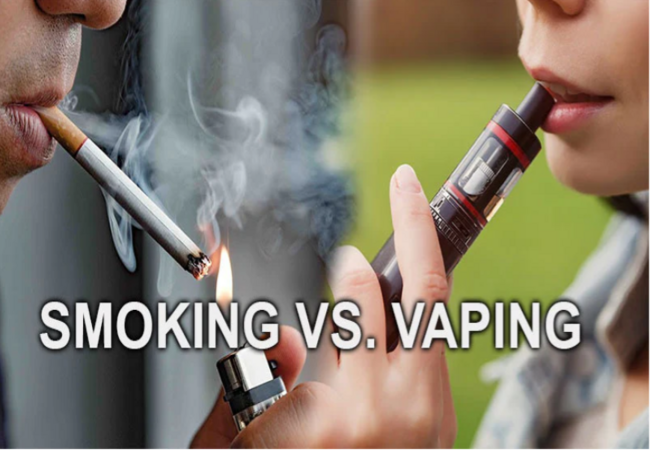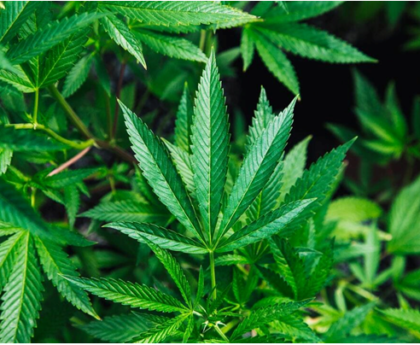The world of nicotine consumption has seen a significant transformation over the past decade, with vaping emerging as an alternative to traditional smoking. While both methods involve inhaling Vaping vs Smoking nicotine, there are crucial differences between vaping and smoking that often get muddle by myths and misconceptions. https://ellz.co/cbd-vape is one the premium brands in the vape industries. In this blog, we will explore the distinctions between vaping and smoking and debunk some common myths associated with vaping.
Vaping vs. Smoking: The Basics
Smoking:
Combustion: Smoking involves burning tobacco leaves, releasing thousands of harmful chemicals and toxins, including tar and carbon monoxide.
Inhalation: Smoke is inhale directly into the lungs, exposing them to carcinogens and irritants.
Secondhand Smoke: Smoking produces secondhand smoke, which poses risks to those nearby due to passive inhalation.
Odor and Stains: Smoking leaves a lingering odor and stains on teeth and fingers.
Health Risks: Smoking is link to a myriad of health issues, including cancer, respiratory diseases, and heart disease.
Vaping:
Vaporization: Vaping involves heating a nicotine-containing e-liquid to create a vapor, eliminating the combustion process and many harmful chemicals.
Inhalation: Users inhale the vapor, which typically contains nicotine, flavorings, and a base liquid (usually propylene glycol and vegetable glycerin).
Secondhand Vapor: Vaping produces secondhand vapor, which is generally Vaping vs. Smoking considered less harmful than secondhand smoke.
Odor and Stains: Vaping produces minimal odor and no stains on teeth or fingers.
Health Risks: While not entirely risk-free, vaping is generally considered less harmful than smoking and is used by some smokers as a harm reduction tool.
Debunking Myths about Vaping
Vaping is Just as Harmful as Smoking
- Reality: While vaping is not entirely risk-free, numerous studies suggest that it is significantly less harmful than smoking. The absence of combustion in vaping eliminates many toxic chemicals found in cigarette smoke.
Vaping Causes Popcorn Lung
- Reality: Popcorn lung is a condition associated with exposure to diacetyl, a chemical once used in flavorings. Most reputable e-liquid manufacturers have Vaping vs. Smoking removed diacetyl from their products, and the risk of developing popcorn lung from vaping is extremely low.
Vaping is a Gateway to Smoking
- Reality: The evidence for vaping serving as a gateway to smoking is inconclusive. In many cases, vaping has helped smokers quit traditional cigarettes, Vaping vs. Smoking suggesting it can be a smoking cessation tool rather than a gateway.
E-Cigarettes Explode Frequently
- Reality: E-cigarette explosions are rare and often attributed to user error, such as using damaged batteries or unsafe charging practices. Proper care and adherence Vaping vs Smoking to safety guidelines can prevent such incidents.
Myth 5: Vaping is Equally Addictive as Smoking
- Reality: Nicotine addiction can occur with both smoking and vaping, but e-cigarettes allow users to control their nicotine intake better. Some vapers gradually reduce nicotine levels, making it easier to quit altogether.
E-Cigarettes are Targeted at Teens
- Reality: Responsible vape companies market their products to adults trying to quit smoking. Regulations exist to prevent sales to minors. The increase in Vaping vs. Smoking teen vaping is a concern but is not reflective of the industry’s intent.
Vaping Doesn’t Help People Quit Smoking
- Reality: Vaping has helped many smokers quit or reduce their cigarette consumption. Multiple studies suggest that e-cigarettes can be an effective smoking cessation aid when used correctly.
E-Cigarettes Emit Harmful Toxins
- Reality: While some harmful substances have been detected in e-cigarette aerosol, Vaping vs Smoking they are typically at much lower levels than in cigarette smoke. Long-term health effects of inhaling these substances at these levels are not well understood but are believed to be significantly less harmful than smoking.
Understanding the differences between vaping and smoking is crucial for making informed choices about nicotine consumption. But; while vaping is not entirely without risk, it is generally consider a less harmful alternative to traditional smoking. Debunking common myths about vaping helps dispel misconceptions and fosters a more accurate understanding of its potential benefits and risks. Therefore; Individuals who choose to vape should do so responsibly and be mindful of the quality of products they use, especially when considering vaping as a smoking cessation tool.




